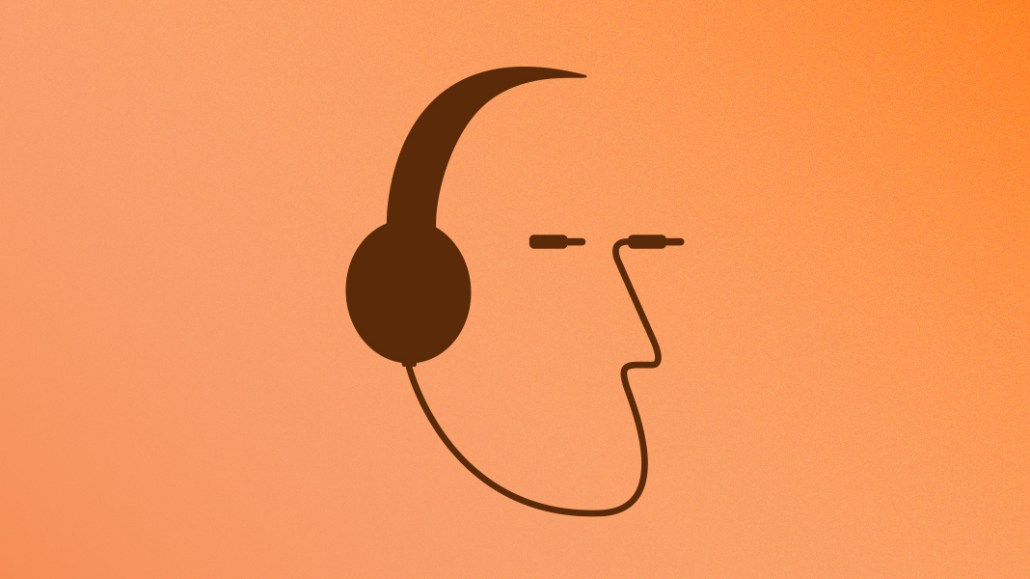
Podcast listening has shifted as people no longer commute to get their audio fix.
The keen interest in current affairs and light-hearted comedy shows, coupled with people yearning for the social interaction of human dialog, is having a positive effect on podcast listening.
Podcast listening has grown by 14% on mobile and 5% on smart speakers during April compared with February, according to media company Global’s audio platform Dax. Listens are up 5% over the last four weeks on podcast platform Acast compared with the four weeks beginning March 23. Podcast networks like Entercom and Vox Media have also showed increased listening in April.
Under the hood the picture is more varied as the pandemic bifurcates the podcast market. Here are some of the winners and losers.
Winners
Exclusive and educational shows
Last week, Spotify signed an exclusive three-year podcast licensing deal worth $100 million for “The Joe Rogan Experience.” The crazy-popular talk-show series has more than 190 million downloads per month. Spotify has ambitious podcast plans to diversify revenue and increase margins. It’s spent hundreds of millions acquiring podcast production and analytics companies, growing its content library to over 1 million shows (only a few are exclusive), earning ad revenue and helping to retain subscribers. As an exclusive show, Joe Rogan will help drive subscribers.
Thanks to these efforts, podcast listening makes up a larger slice of Spotify’s pie: 19% of the platform’s monthly active users listen to podcasts up from 16% at the end of 2019.
“We believe the IAB’s estimate of $1 billion podcast ad spend in 2021 as super conservative,” said Lee Brown, vp, global head of advertising business at Spotify. “With audience consumption growing and voice-activated devices, there are a lot more opportunities in podcasts ahead of us. Most [people] anticipate the next frontier of media, and that’s going to be in audio.”
During the pandemic with people grounded, Acast is seeing people learning new skills and diving further into entertainment. The number of listens to education podcasts has grown by 20% in the four weeks between March and April, likely from a lower base.
Audio and video combo
Spotify has made starts with streaming video over the years. The Joe Rogan deal also includes the video recordings of the shows, which have been getting him 10 million YouTube subscribers, prompting estimates of Rogan as the highest-paid broadcaster.
During lockdown and without commuting, peoples’ preference leans towards audio plus video. Purely audio streaming volumes were almost universally down across all regions during the pandemic, according to Midia Research, but most record labels pointed to a strong rise in YouTube and Vevo streams.
In May, audio platform Soundcloud partnered with Twitch to air live chat series, panel conversations and shows focused on music discovery.
Quick movers: Remote audio ad production
In search of audiences, advertisers have moved offline budgets into digital over the last few months, especially digital audio ad formats because of the speed of production. During the pandemic, speed is at a premium.
A drinks brand was set to run a TV campaign but because of social distancing orders and a ban on large gatherings, it spent more on Spotify, which helped produce its audio spots. The ads still reference summer but account for it being a different time.
Over 10 advertisers have approached Dax to run audio campaigns that were meant to run on TV. Thanks to setting up remote audio production in staffers’ homes, Dax can design, record and serve audio ads within 48 hours. Acast turns around traditional airtime ads in 24 hours. Spotify’s self-serve ad platform lets marketers create their own ads in just four hours.
“Audio is going to be viewed by advertisers as a nimble, practical way to get the message to advertisers,” said Oliver Deane, director of commercial digital at Global. “They’re of good quality and still produced seamlessly.” That’s not always the case with video ads. Large advertisers like Barclays bank and retailer Tesco adapted their ad creative to reference their response to coronavirus.
Losers
Most sports shows
Without any live sports, sports podcasts are getting creative with content. According to Acast numbers, sports listening is down by 4.5% over the last four weeks, while all other genres are seeing listening growth. “The Extra Inch,” football club Tottenham Hotspur podcast show, is spinning out episodes about performance or the club’s subpar reaction to the pandemic by furloughing staff. “The Extra Inch” has lost half of its monthly listeners since the pandemic. There’s a long-tail of hundreds of thousands of podcasts underneath the top. Broadly, estimates are that most podcast creators are seeing a 20% decrease in listeners.
Podcast’s “urban commuter” demo proxy
Podcast CPMs have stayed pretty buoyant as fewer industry standards and measurements meant advertisers entered the game slower. Ad buyers are keen to reach podcast’s urban commuter demographic, too. Audio and podcast listening is no longer clustered around commuting.
On the plus side for now that shaving a positive impact on ads, Mediacom is seeing a steadier market for audio streaming as audiences have been more consistent throughout the day, said Mediacom partner Charlie Yeates.
Update: A previous version of this article incorrectly stated that Spotify would not earn ad revenue from “The Joe Rogan Experience.”
More in Media

Digiday’s comprehensive guide to what’s in and out for publishers in 2026
Adaptability stopped being a nice-to-have for publishers years ago; it became a survival skill. Here’s a look at Digiday’s guide to what’s in and out for 2026.

Here are the biggest moments in AI for publishers in 2025
Here are some of the moments that defined how publishers adapted to the AI era this year.

Digiday+ Research roundup: Gen Z news consumption and diversification in the DSP space were 2025’s top trends
As 2025 winds down, we rounded up the biggest trends of the year, based on the data that resonated the most with Digiday’s readers.








